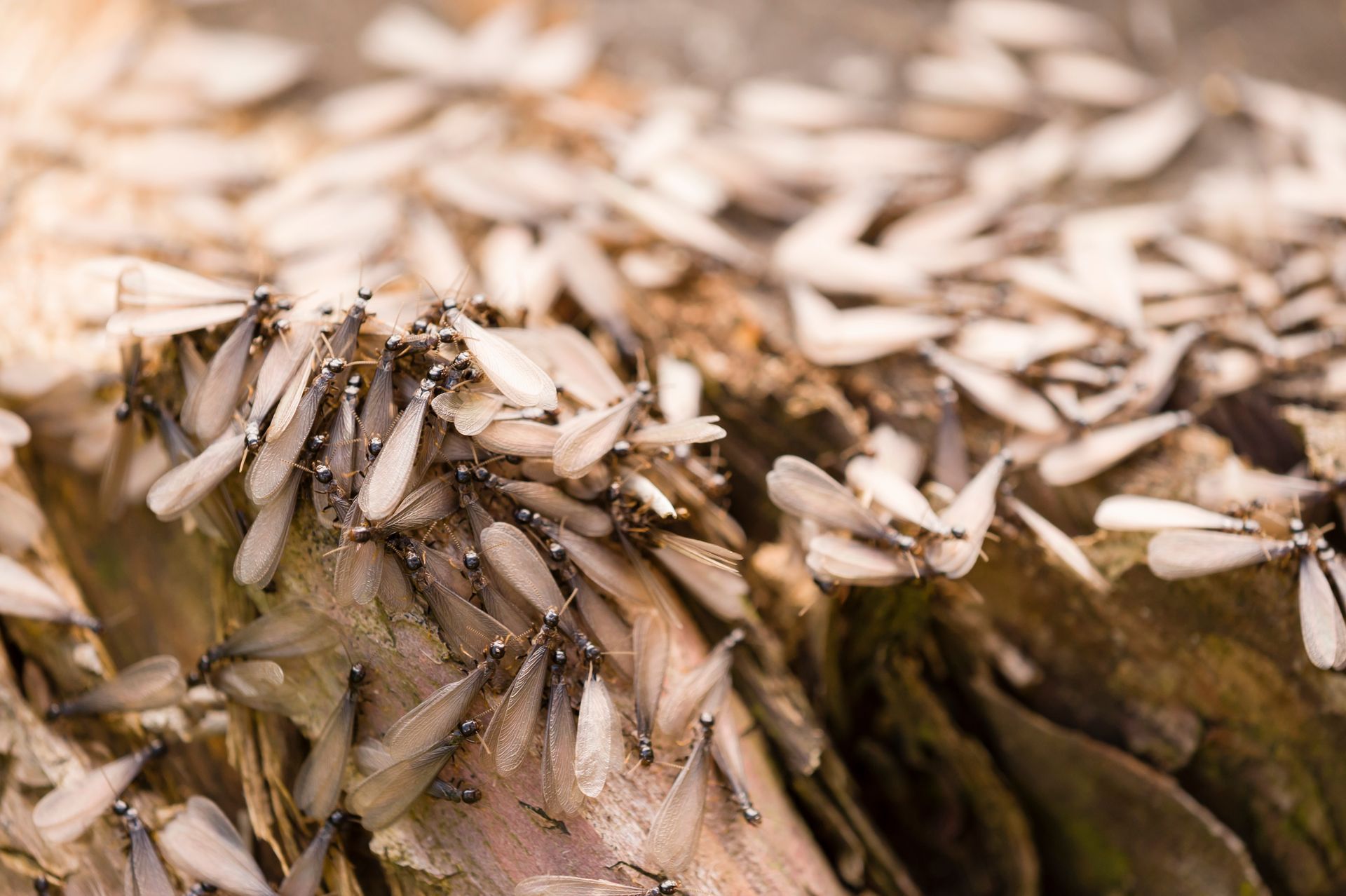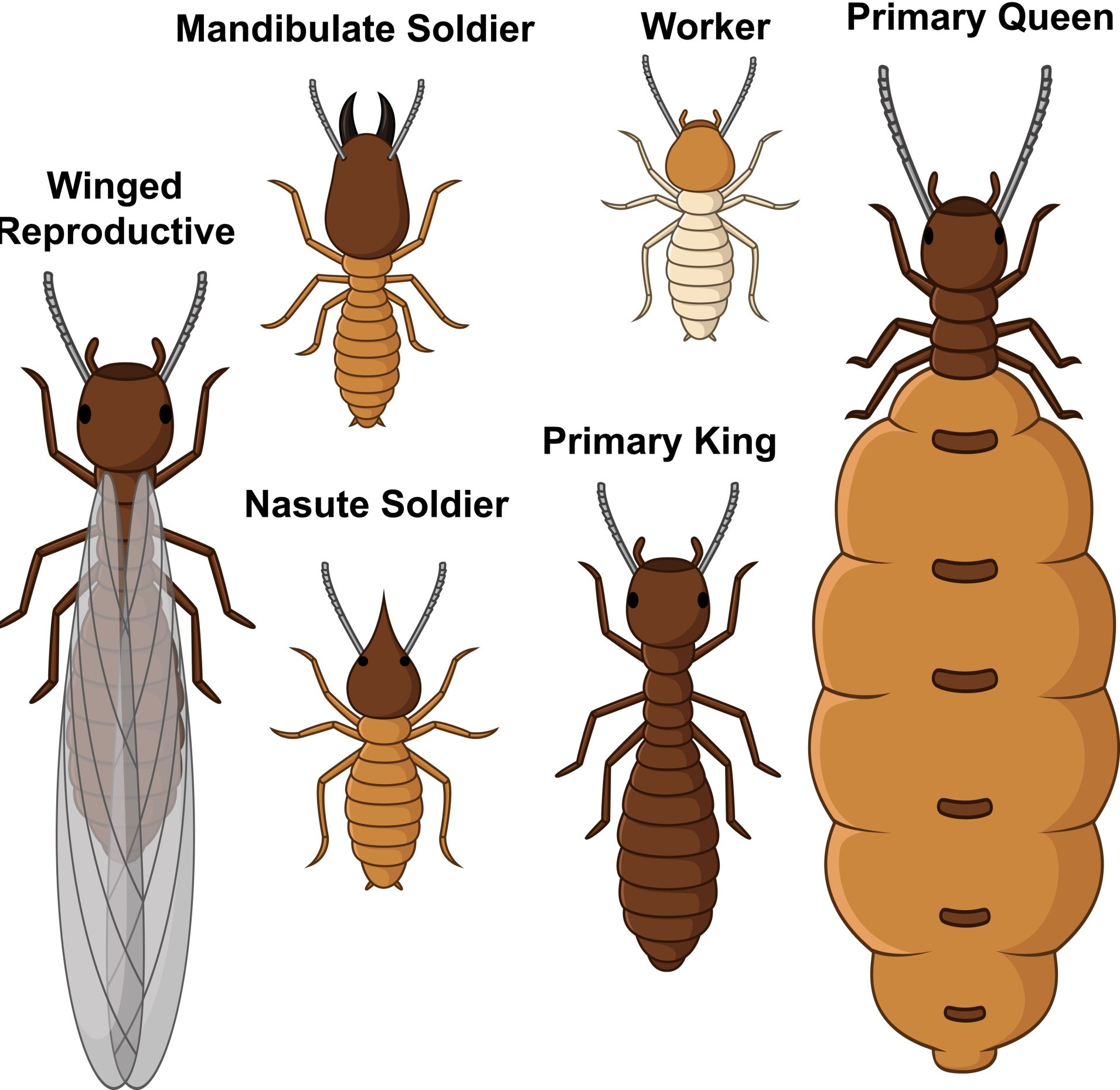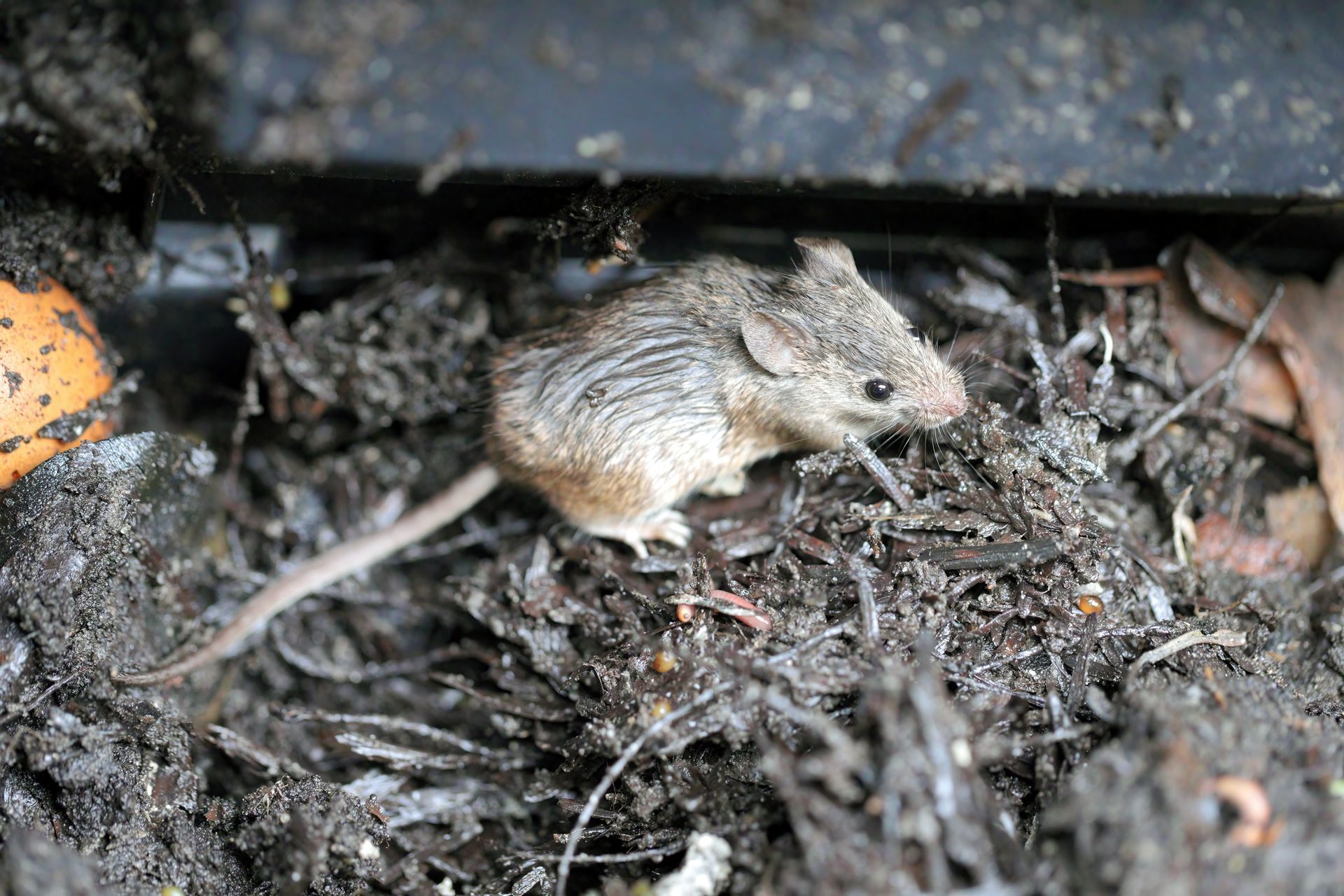What Should You Do If You See Termites with Wings?

Termites are primarily known for their destructive behavior, often causing significant structural damage to wooden homes and buildings. The way that termites reach their destination is rather unknown to most people. Termites find locations to build new colonies by sending swarms of flying termites, also known as "alates," out on a mission to seek a new wooden structure to feed on. These alates leave their original colony due to space and resources constraints caused by their colony outgrowing the space they inhabit. This phenomenon, known as swarming, typically occurs during the daytime, frequently in spring, and often after a rainstorm. The sight of flying termites is a clear indication that there are one or more active termite colonies nearby that have outgrown their nests.
If you notice a swarm of flying termites, it's crucial to investigate further to ensure that a colony hasn't established itself in your home. While many of the swarmers won't survive the journey, those that make it to their new destination will help establish a new colony. A new queen will emerge from the swarm with her new king in tow. The size of the swarm can vary depending on the termite species, with drywood termites often having less than 100 termites in a swarm, while subterranean termites can produce a swarm with thousands of reproductives. Regardless of the swarm size, the presence of flying termites is a tell-tale sign of an infestation nearby.
What is the Difference Between Flying Termites and Normal Termites?
Termites, known for their destructive behavior, have a well-defined life cycle with different roles assigned to different members of the colony. All termites start as eggs, then hatch into larvae, and mature into molting nymphs. From this point, they can develop into workers, soldiers, or alates, also known as flying termites. Workers are responsible for expanding the colony by digging tunnels. Soldiers are characterized by their large heads and intimidating jaws that are designed to help protect the colony, its queen, and the colony inhabitants.
The alates, or flying termites, are the only termites capable of reproduction. Unlike other termites in the colony, flying termites do not eat wood. Their only job is to find a new colony site and ensure that the new queen can start producing eggs. The lifespan of termites varies significantly based on their roles. Workers and soldiers typically live for one to two years, while flying termites usually die shortly after their first flight. A termite queen is responsible for laying eggs and maintaining the colony. She plays the most important role in the colony and can survive for decades. Given the resilience and tenacity of these small creatures, dealing with a termite infestation often requires professional intervention for effective and long-lasting solutions.
How to Identify Winged Termites
Flying termites are the members of a termite colony whose responsibility is to mate and reproduce. They are typically between 6 and 9 mm long and can range in color from tan to dark brown or black. One of the most distinctive features of flying termites is their wings. They have two pairs of wings that are equal in length and are about twice the length of their bodies. These wings are semitransparent with veins that run the length of the entire wing. Another distinguishing feature of flying termites is their antennae which are typically straight with a slight curve. Unlike other insects, flying termites do not have segmented bodies, giving them a uniform appearance.
The time of year when these termites swarm can also help identify their species. For instance, subterranean termites typically swarm and mate during spring and summer, while drywood termites can be spotted swarming from late summer through fall. Sometimes they can be confused with flying ants, but there are visible differences between the 2 insect species. Correct identification is crucial as the treatment methods for termites and ants differ significantly.
Winged Termites vs Winged Ants
Winged termites and winged ants are often confused due to their similar size and appearance, but there are several key differences that can help distinguish between the two. Winged termites have slightly curved antennae without any bends and a thick, wide waist that is the same width as the rest of their body. Their wings are equal in length and extend far beyond their bodies. Flying ants have a pinched waist and antennae that have several bend points. Their wings are unequal in length, with a longer set of front wings and a shorter set of back wings.
Another key difference is in their life cycle and behavior. After mating, termites shed their wings while ants do not. If you're unsure whether you're dealing with termites or ants, it's recommended to contact a pest management professional. Accurate identification is crucial as the treatment methods for termites and ants differ significantly, and knowing the difference could save time, money, and provide peace of mind.
Can All Termites Fly?
Not all termites can fly. Only a specific caste of termites, known as "alates" or "swarmers," have the ability to fly. These winged termites’ primary role is to leave their current colony when it becomes too crowded, and mate to establish new colonies. Their flight, however, is limited both in duration and distance. After a short flight, these termites shed their wings and begin the process of assisting a new queen with establishing a new colony. These swarms typically occur during a specific time of year and are a key sign of a nearby termite infestation.

Why Do Termites Fly?
The purpose of termites flying has a lot to do with their reproductive process because the swarmers are the only members of the colony capable of mating. They leave their current colony to establish new colonies elsewhere because when a colony has reached its capacity, it needs to expand its presence due to lack of available resources. This event is also often triggered by conditions such as heavy rainfall and warm, humid temperatures. This could be due to moisture weakening wooden structures which makes establishing a new colony easier. After finding a suitable location for a new colony and mating, the swarmers shed their wings and build a habitable nest for the new queen termite.
When Do Flying Termites Appear?
Flying termites typically appear when a termite colony has matured and needs to expand. This usually occurs within three to four years of the colony's establishment. The timing of their appearance can vary, but most termites fly during the day, often using lights as meeting points. After mating, these termites head towards the ground, shed their wings, and start forming a new colony.
From a seasonal perspective, termite swarms generally occur during spring or summer, with some species swarming as early as February and as late as November. Meteorologically, flying termites often appear after rain when the air is calm. Most termite species swarm during the day, while only a few species are known to swarm at night.
How Long Do Termites Swarm For?
Mature termite colonies produce winged reproductive termites which fly away from the colony in large numbers. The swarming event typically lasts between 30 and 40 minutes, during which the termites fly towards a light source. These swarmers use their wings to fly only a short distance from their nest. Upon finding a suitable location to establish a new colony, they shed their wings and never fly again. If they fail to find suitable soil to start a new colony, they will die from dehydration within a few hours. A winged termite can become the queen or king of a new colony, with a queen termite capable of surviving for over a decade under optimal climate conditions.
How Did I Get Flying Termites?
Flying termites emerge from existing colonies to mate and establish new colonies in different locations. The presence of a flying termite swarm near a home could suggest a large termite colony in the yard or a nearby area. If you find multiple alates inside your home, notice their shed wings around doors and windows, or see them emerging from the exterior of your house, it's likely you have an active termite infestation in your home. In colder regions, the warmth of a home's interior can also draw in termite colonies, making it an ideal location for flying termites to reproduce and establish a new colony.
Does Seeing Flying Termites Mean You Have a Termite Problem?
Seeing flying termites does not necessarily mean you have a termite problem. Termites can be easily deterred and blown off course by the wind, so an individual termite found near a window or door probably doesn’t indicate too much of a problem. However, if you observe a swarm of flying termites inside or around your home, it usually suggests an infestation is likely.
The appearance of flying termites could also mean that a termite colony has matured within your walls. In either case, termites have likely been in the vicinity for some time. It's recommended to get your home inspected to assess and mitigate the risk of termite damage if you spot flying termites in your home.
How Serious Are Flying Termites?
Termites are one of the most destructive pests and colonies take about three to six years to mature to the point of producing alates. Seeing flying termites indicates the presence of a mature termite colony that is ready to expand. During this time, and as long as the colony remains active, worker termites can cause significant damage by feeding on the interior portions of wooden structures, leaving the outer shell intact.
The damage caused by termite infestations can go unnoticed for years, as the destruction is often hidden within the structure of the building. Signs of an infestation, such as the presence of mud tubes or cracks in the wood, often only become apparent when the damage is extensive. The appearance of flying termites is a serious warning sign that homeowners should not ignore, as it suggests the potential for significant structural damage. It's crucial to take immediate action to address the issue and prevent further damage.
How Can You Tell if You Have a Termite Invasion?
Identifying a termite invasion in your home involves looking for several key signs. The sudden appearance of termite swarmers, or winged termites, indoors or outdoors is a clear indication of a potential termite problem. However, there are other signs to watch out for even before swarmers appear. These include:
- Mud tubes on or near the foundations of your property, inside or outside walls and ceilings, and around plumbing
- Termites dislike airflow and will patch small holes in wooden structures with mud
- Structural issues, such as sagging ceilings, broken door jambs, or buckling wooden floors
- Finding termite droppings, known as frass, which are dry, six-sided, tan pellets that look like sand or fine pepper
- Wood that sounds hollow when tapped
- Sounds of termite "headbanging" in the walls, which is a form of termite communication that can produce a rattling sound audible to humans
- Small holes and damaged wood found on nearby trees
- Noticeable exterior wood damage or hollowed-out wood found on the property
- The presence of uneven or bubbling paint
- Shed wings from alates that have found a new space to colonize
What Happens to Termite Swarmers?
After a mature termite colony produces winged termites, they take flight to form mating pairs. Once a male and female pair up, they mate, drop to the ground, and shed their wings. They move quickly across the ground in search of a suitable location for their new colony. Once they find an appropriate spot, they settle down and begin to build the nest. Even if these termites settle away from your home, they still pose a potential threat because the colony that emerges may later attack your home if it is unprotected.
What Should I Do if I Find Swarming Termites?
If you discover swarming termites in or around your property, the first step is to conduct a thorough inspection and understand the termite treatment history of the property. This will help determine the appropriate course of action, which may include a soil treatment with a liquid insecticide, the installation of a termite baiting system, or another remedial treatment.
However, before taking any action, it's essential to confirm that the swarming insects are indeed termites. Many ants also produce swarmers with wings, and it can be easy to confuse the two groups without in-depth knowledge of both species. It helps to enlist the help of professionals to ensure that effective treatment is implemented immediately to prevent further damage caused by termite swarms.
How to Get Rid of Flying Termites
If you discover flying termites, the first step to take is to contact a pest control company to schedule an inspection, especially if you have an existing termite contract. These inspections and treatments are crucial to maintain control over the termite population. If you have an active contract and there's a termite reinfestation during the covered period, the retreatment is often free or administered at a significantly reduced cost. However, it's important to avoid any construction work or other activities that might void your renewal service contract.
In case you don't have a termite contract, it's advisable to contact EcoGuard Pest Management as soon as possible. Termite swarmer activity doesn’t always indicate an active termite infestation, but it's best to let a professional termite control expert check anyway. Request a termite inspection that offers termite mitigation services. If an infestation is identified during this initial inspection, it's critical that your home or property be treated as quickly as possible to prevent severe structural damage. Always consult a professional to ensure the most effective and safe termite control methods are used.
Contact EcoGuard if You Are Dealing with Flying Termites
If you're dealing with termites, don't hesitate to reach out to EcoGuard Pest Management. Our team of experienced professionals is equipped with the knowledge and tools necessary to effectively handle any termite situation. We understand the urgency of termite infestations and are committed to providing swift and efficient solutions to protect your home or business. Remember, early detection and intervention are key to preventing significant structural damage. Don't let termites take over your property. Contact EcoGuard Pest Management today and let us help you maintain a safe, termite-free environment.

















